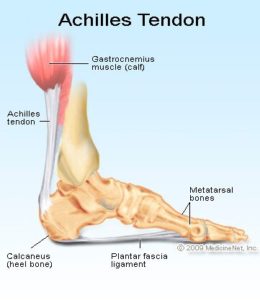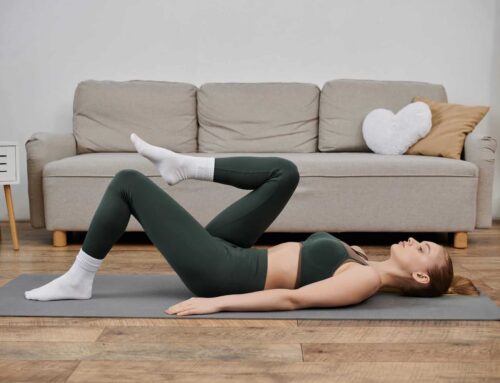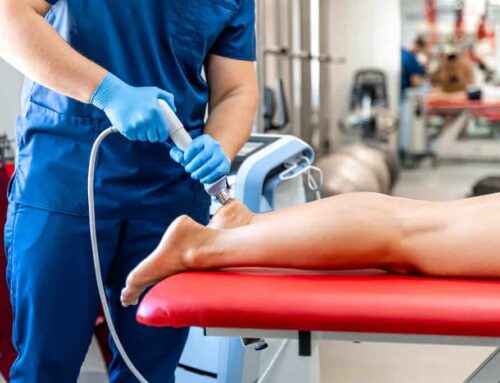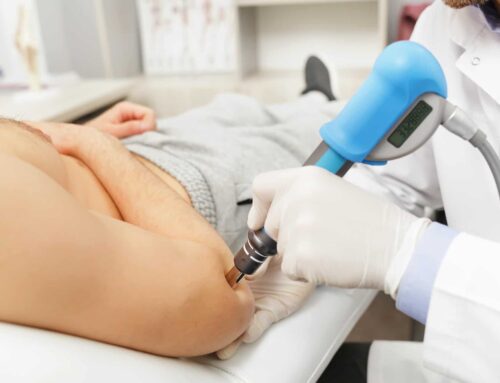What’s up with tendon pain? Whether it’s your Achilles, patellar tendon, quad, or hamstring, painful tendons can be difficult to fix. If you have localized pain near the butt, knee, or ankle that gets worse with your favorite activity, you might be dealing with a tendon issue. Read on to find out:
- What’s this thing you call a tendon?
- Is there a difference between -itis and -opathy?
- What do I do to heal my tendon?
- Are there things I should avoid when my tendon hurts?
What exactly is a tendon?
Tendons help with movement by connecting muscle to bone. Some tendons help with joint positioning, while others store energy and improve your ability to move. The tendons that we’ll focus on today are in the leg and help with energy storage and release. The hamstring, patellar, and Achilles tendons are the ones we most commonly see and treat in the leg.
What are the types of tendon injuries?
There are a few different types, but we’ll focus on the difference between tendonitis and tendinopathy.
When a tendon is inflamed, it’s called tendonitis. This is typically an acute injury and lasts less than a few months.
The term tendinopathy is used for a range of tendon issues, typically caused by repetitive stress and an inability to heal properly. Straining a tendon for months or even years disrupts healing capabilities, leading to changes in the tendon’s structure. These structural changes can decrease the tendon’s stiffness, making it harder for the tendon to work well when you’re running and jumping.
What should I do to help my tendon heal?
- Modify activity. With tendonitis, the healing process tends to be faster. You can be back to your favorite sport in 2-8 weeks, depending on the level of irritability. In this state, the tendon responds well to modifying or changing activities for a short period, followed by gradually and systematically returning to normal activity.
- Progressive loading. After the initial inflammation is gone, tendons require gradual re-loading. Loading the tendon via specific exercises increases its strength and facilitates healing. If a tendon has progressed from the short-term inflamed state to a chronic state of disrupted healing, this process of re-loading until it’s tolerant of activity can take several months. Progressive loading of a tendon sounds simple, but it’s really an art – you have to find the balance between completely resting and entering your local dunk contest. To help with healing but avoid further strain, we have to systematically apply force and increase the stress placed on the tendon over a period of time.
To sum it up: exercise is the best treatment for tendon pain, but it needs to be programmed and guided specifically.
What should I avoid to help my tendon heal?
- Rest. Rest is not the answer for tendon issues. It may help temporarily, but once you return to running or jumping, your pain comes right back – you haven’t addressed the fact that the tendon isn’t able to recover from the demands placed on it.
- Foam rolling or scraping right on the tendon. The tendon is stressed and irritable. Would you poke and dig at your spouse if he or she was stressed or irritable?! Probably not…or hopefully not. With that said, you may get some relief from massaging or foam rolling the muscles adjacent to the tendon. So if your Achilles is sore, loosening your calf muscle can help reduce your pain, but avoid directly pushing on your sore spots where the Achilles attaches to the heel.
- Stretching. Stretching is another thing that can feel good at the time, but doesn’t help long-term. It can add compressive forces to the tendon, which doesn’t help with its remodeling and could even aggravate it. When you feel like you need to stretch, use massage on your muscles instead. If you’re someone whose hamstrings always feel tight check out our post about why stretching alone won’t fix them.
Have you been struggling with tendon pain for months or even years? We’d love to help. Give us a call at 480-771-0351
Having tendon pain doesn’t mean all your activity is over, or that you can’t get back to where you were or better – just check out Annie’s story! For help getting back to the things you love, call today to schedule!





